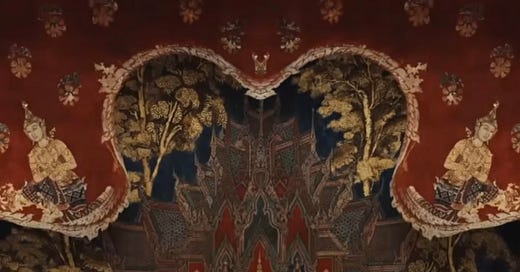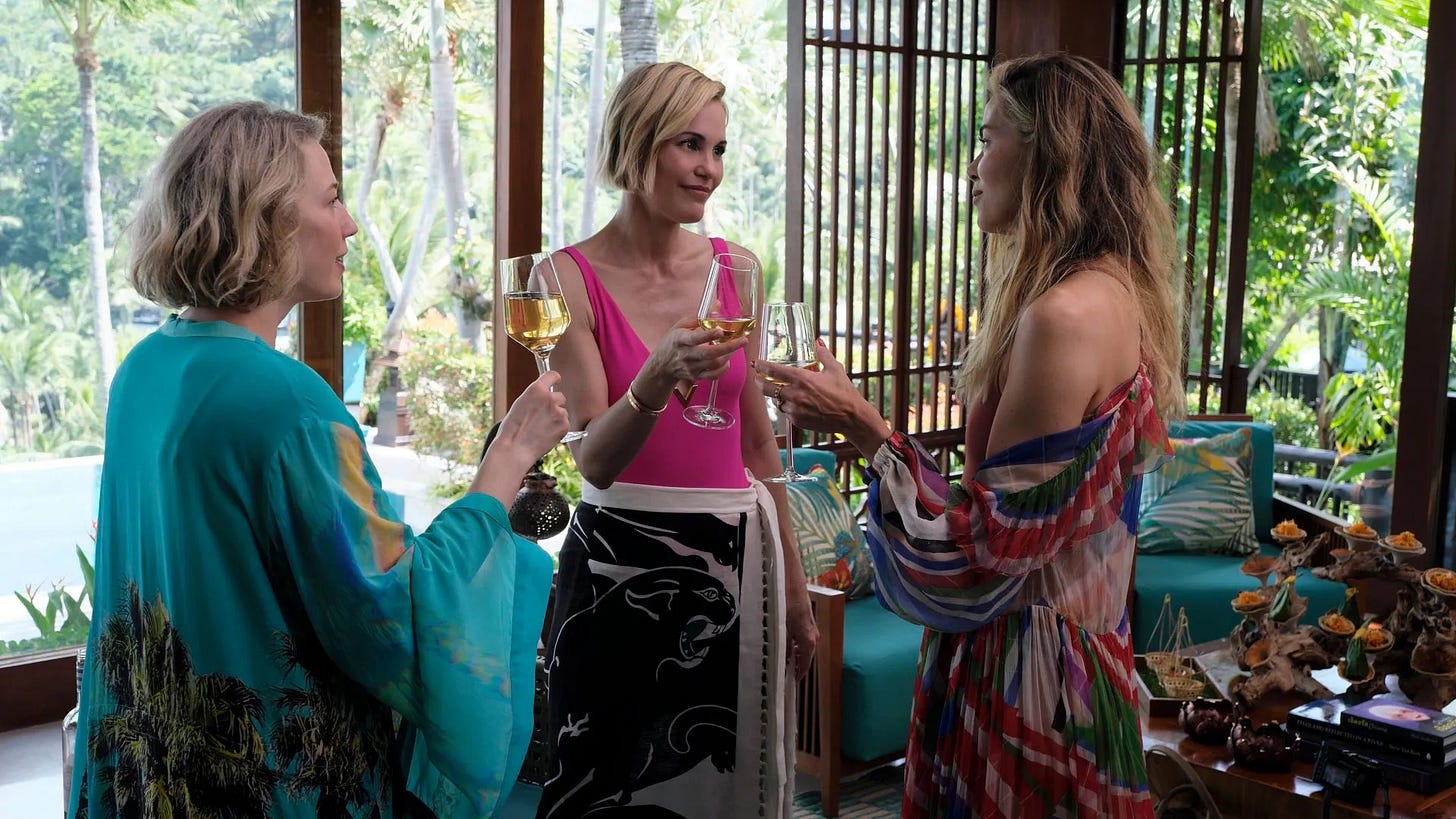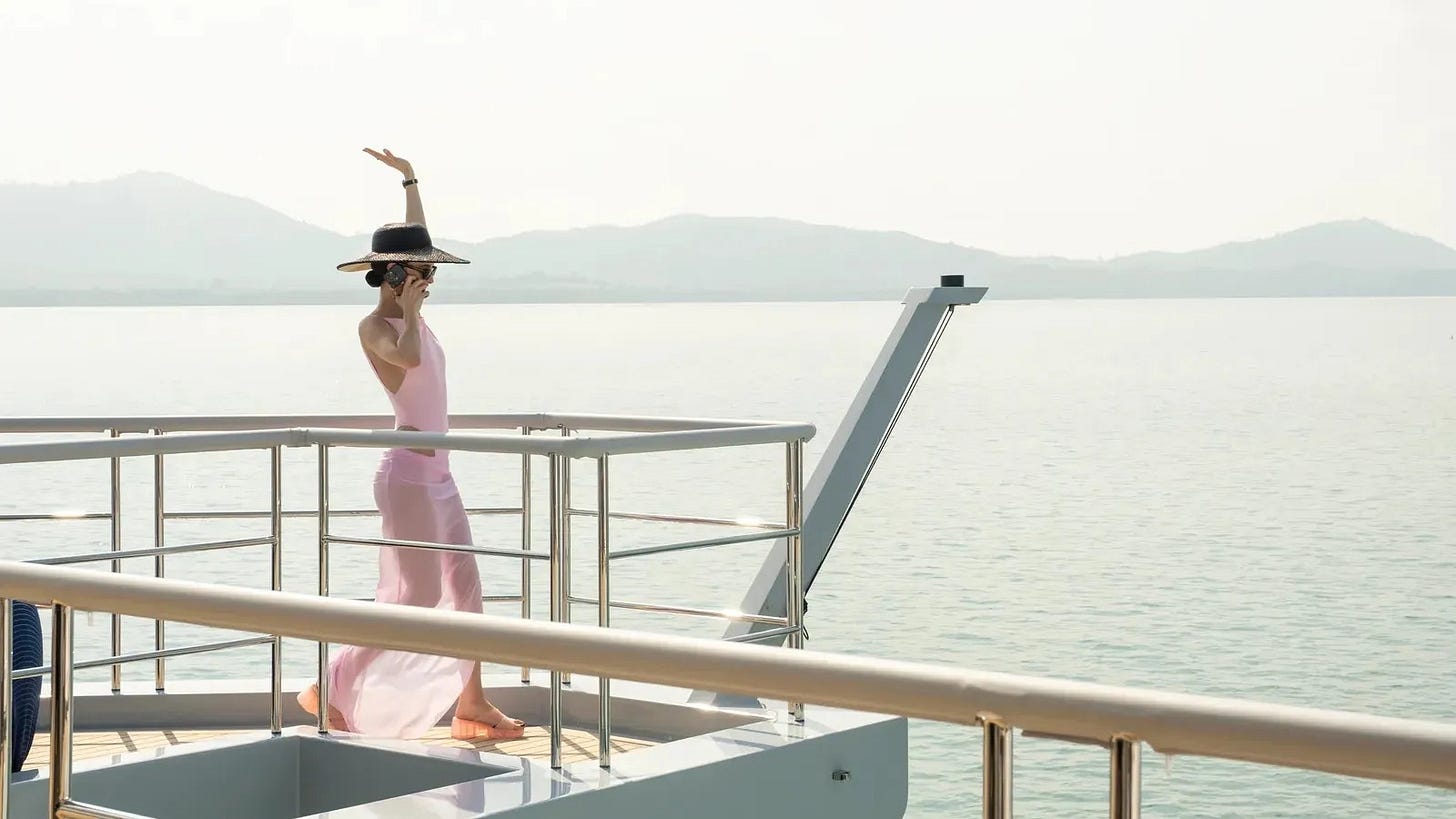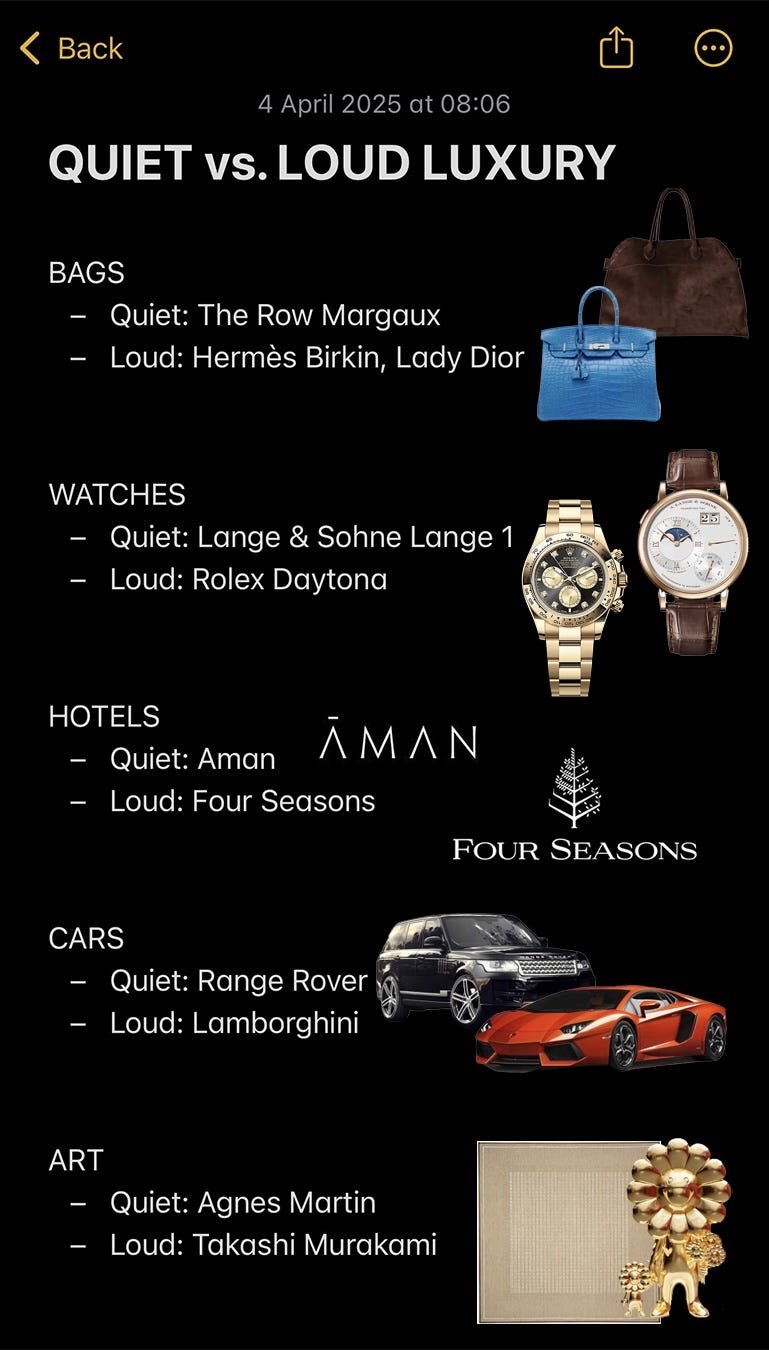Amid the lush landscape of Koh Samui, the intriguing and sometimes tragic events happening at The White Lotus offer more than entertainment: they tell us a deeper story about the evolving world of luxury.
WHAT IS HAPPENING. The show that defines luxury today
For the past month, the world has been immersed into the third season of The White Lotus, Mike White’s hit series that continues to entertain, spark conversations, and define trends.
This season takes us to Thailand, where a diverse - though predominantly wealthy - group of guests settle into their latest lavish escape. Between afternoon massages and poolside dinners, they are watched by a group of local monkeys, whose presence gradually shifts from mere background detail to silent omen.
Among the guests, a trio of stylish girlfriends moves from sipping cocktails by the water to seeking adventure with the locals, their outfits as meticulously curated as their social lives. Television actress Jaclyn effortlessly dons a vintage 2006 Chanel chiffon dress over her swimsuit, while Texas socialite Kate is in head-to-toe Valentino by the pool, and New York lawyer Laurie carries Loewe bags while draping herself in Zimmerman kimonos.
Fast forward a few episodes, and we see the Ratliff family boarding a grand yacht, greeted by Chloe, a former French model dressed in custom Jacquemus resort wear. The family looks like they’ve stepped out of a Ralph Lauren catalogue, though drama simmers beneath the polished surface. Victoria, the matriarch, clutches her Gucci bamboo bag (will we see it back on the runway next season?), supposedly stuffed with lorazepam as she admits, “I just don’t think, at this age, I’m meant to live an uncomfortable life.”
But beyond the drama and exploration of human nature and social class, The White Lotus also offers a new perspective on the evolving landscape of luxury.
WHY YOU SHOULD CARE. To each their own: loud luxury and unique experiences
QUIET LUXURY IS OUT, LOUD LUXURY IS IN. FOR SOME
HBO, the distributor of The White Lotus, has a history of influencing trends. In 2023, Succession launched the quiet luxury trend, emphasizing understated, high-quality fashion and mocking excessive accessories, like the iconic “ludicrously capacious bag”.
Quiet luxury was further popularised by celebrities like Gwyneth Paltrow in her Brunello Cucinelli “I lost a half day of skiing” looks and Kendall Jenner’s The Row rebrand. These choices contributed to the rise of minimalist wardrobes dominated by neutral tones and simple yet high-quality materials.
However, the quiet luxury trend quickly became oversaturated, paving the way for a fresh emphasis on individuality and self-expression. A new wave of luxury is now defined by bold, daring aesthetics, as seen in the unapologetically playful fashion of The White Lotus and the maximalist, richly decorated design of Alessandro Michele’s Valentino.
Much like quiet luxury as a mainstream trend, loud luxury is likely to appeal primarily to aspirational consumers. The costumes in The White Lotus are designed to entertain rather than reflect how the 1% actually dress on vacation. For truly affluent consumers, simpler, more understated styles are likely to remain the standard, as quiet luxury represents more of a lifestyle than a trend to be adopted for social status.
EXPERIENCES ARE REDEFINING LUXURY
The White Lotus characters spend their time indulging in lavish holiday experiences, showcasing a growing shift in how luxury is defined. For the ultra-wealthy, luxury is increasingly defined by experiences rather than products.
According to Bain & Company, spending on luxury experiences grew by 5% last year, while product spending declined. Luxury brands are responding to this shift by offering exclusive experiences that deepen their connections with top clients. Ultra-high net worth individuals, who represent the top 2% of luxury consumers, account for nearly 40% of global luxury sales. By offering unique, intimate experiences to a select few, brands cultivate loyalty with personal interactions while enhancing their desirability through the power of scarcity.
Examples of such experiences include:
Bottega Veneta’s secret event in Milan, featuring intimate performances by Patti Smith and Soundwalk Collective.
Van Cleef & Arpels’ exclusive VIP event in Miami celebrating the launch of its Treasure Island collection, including boat rides, pirate history explorations, and a Michelin-starred gala dinner at the Vizcaya Museum.
Tiffany & Co.’s fine dining experience at its Fifth Avenue flagship store.
Mytheresa’s immersive luxury shopping events, such as a “Holiday House” experience in LA and VIP experiences with Givenchy in Paris, Miu Miu in Vienna, and Jimmy Choo in Venice.
Brunello Cucinelli’s invite-only Casa Cucinelli locations worldwide, offering intimate events and private shopping.
Gucci’s appointment-only Salon in LA as part of its brand revival strategy.
Miu Miu’s 70-year-old client walking the Paris Fashion Week runway upon invite.
These experiences not only enhance client loyalty but also create an air of exclusivity that elevates the luxury brand experience.
The White Lotus does more than just entertain; it provides a sharp perspective on the evolution of luxury. The shift from quiet luxury to bold, expressive designs, coupled with the increasing value placed on experiences over material goods, mirrors broader trends in the luxury market. The show delivers key insights for brands on how to appeal to different customer segments, emphasising personalisation, individuality, and exclusivity as core strategic elements.








Succession cast represents real money (billionaires) while white lotus cast is upper middle class.
Love Agnes Martin, her work is literally quiet